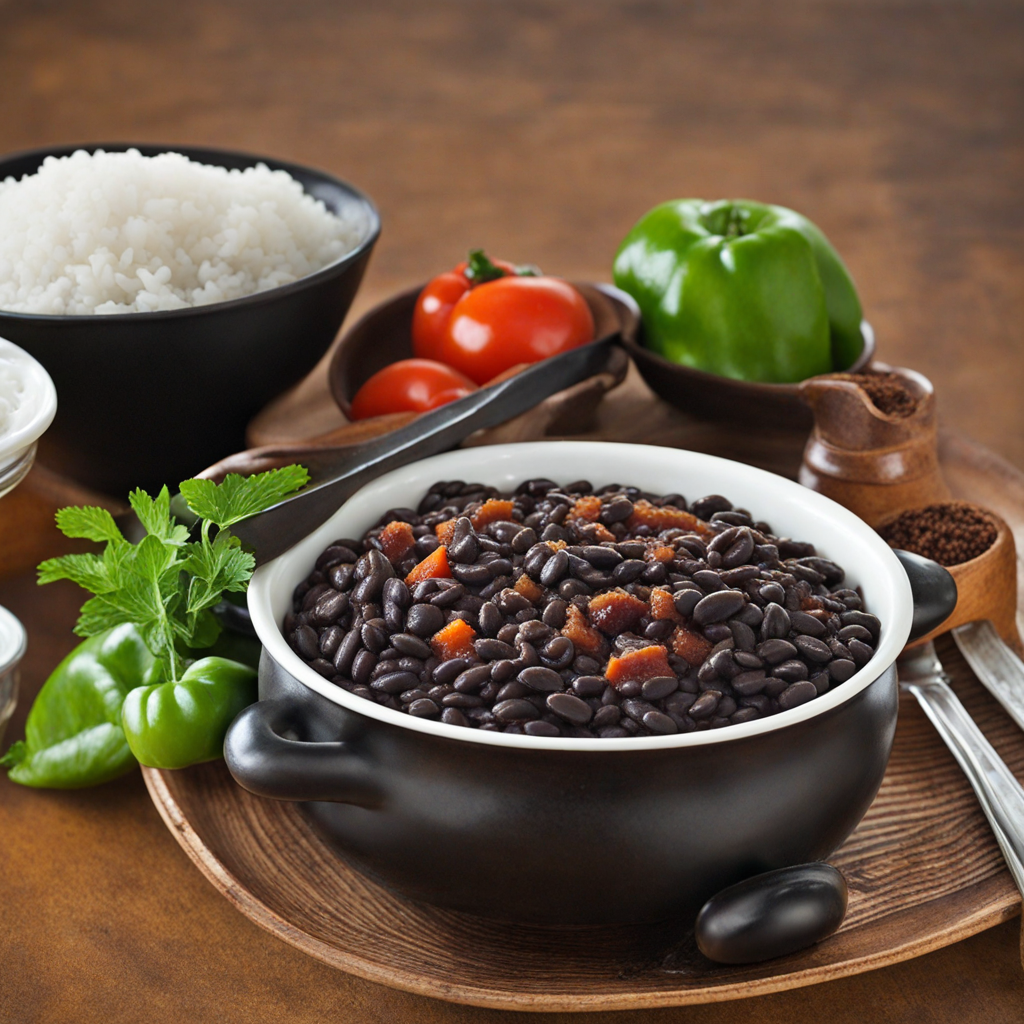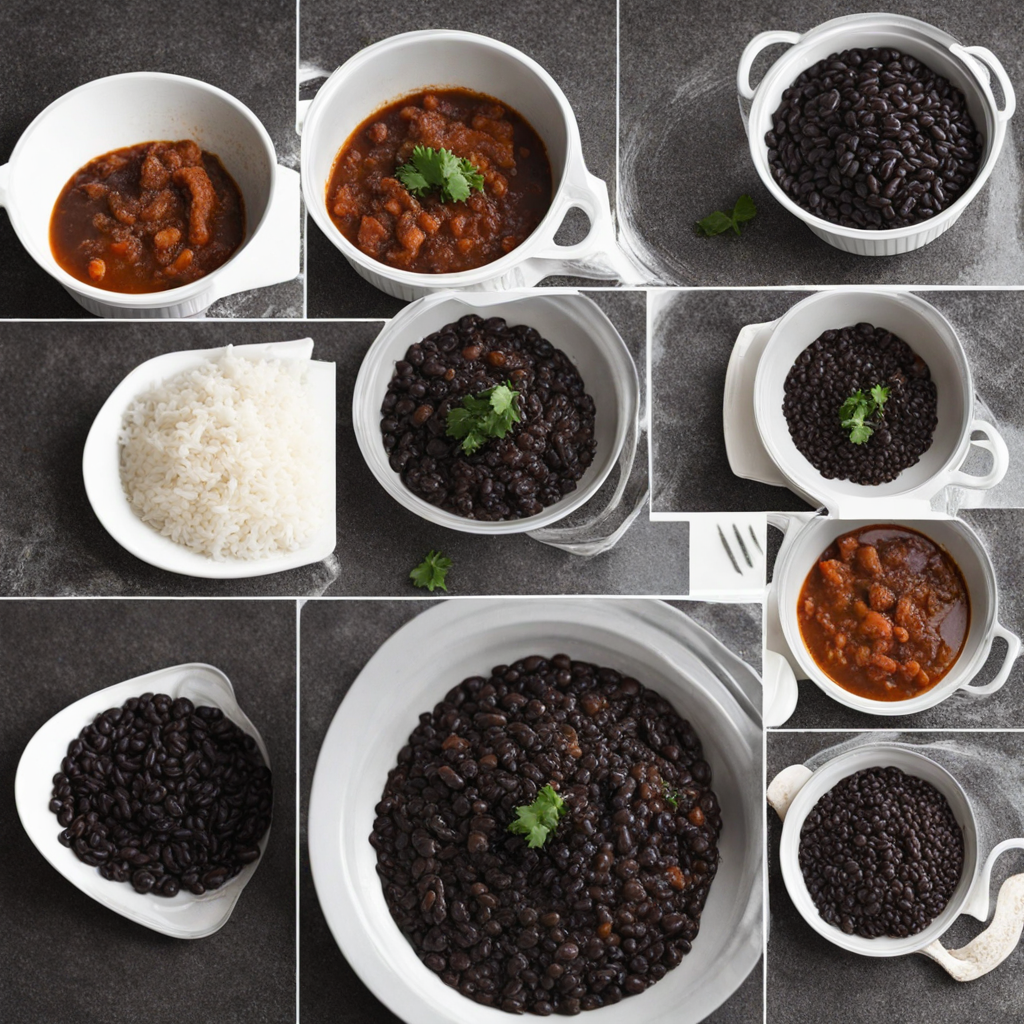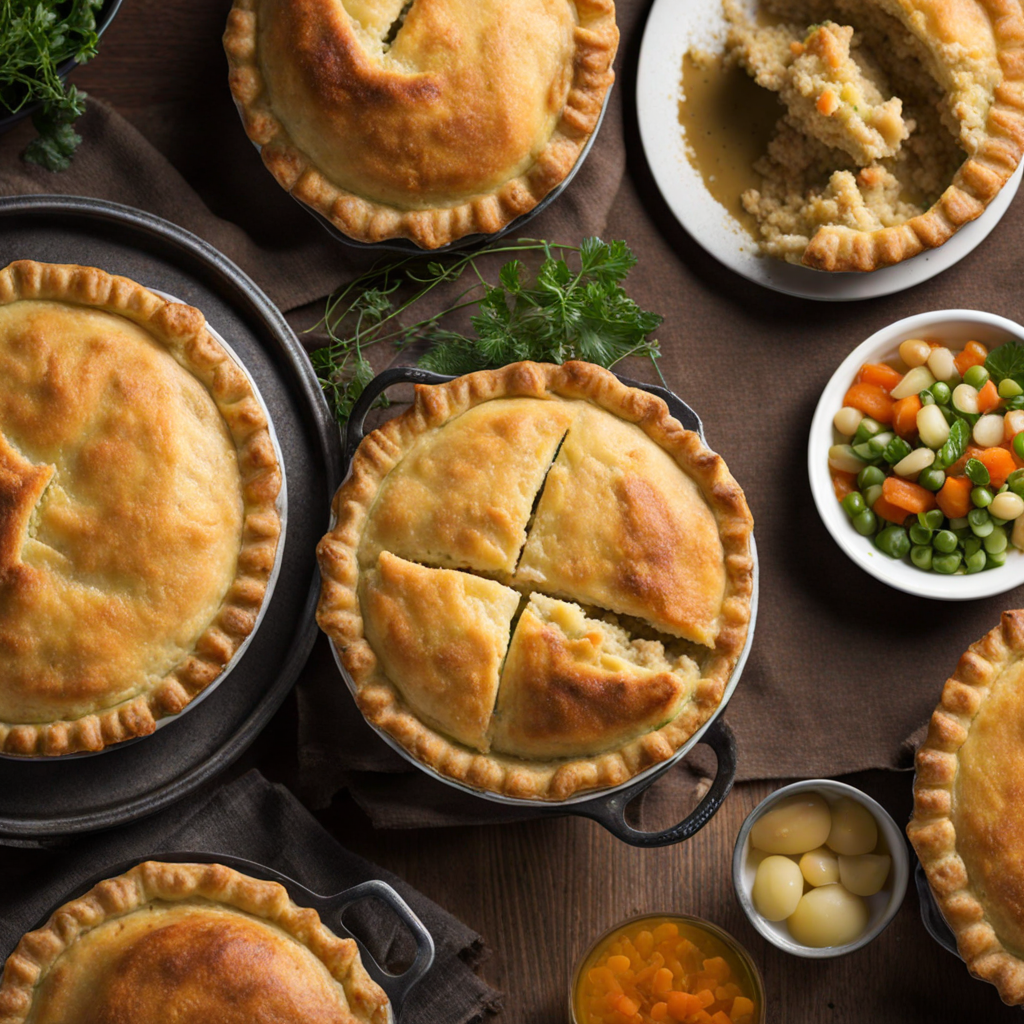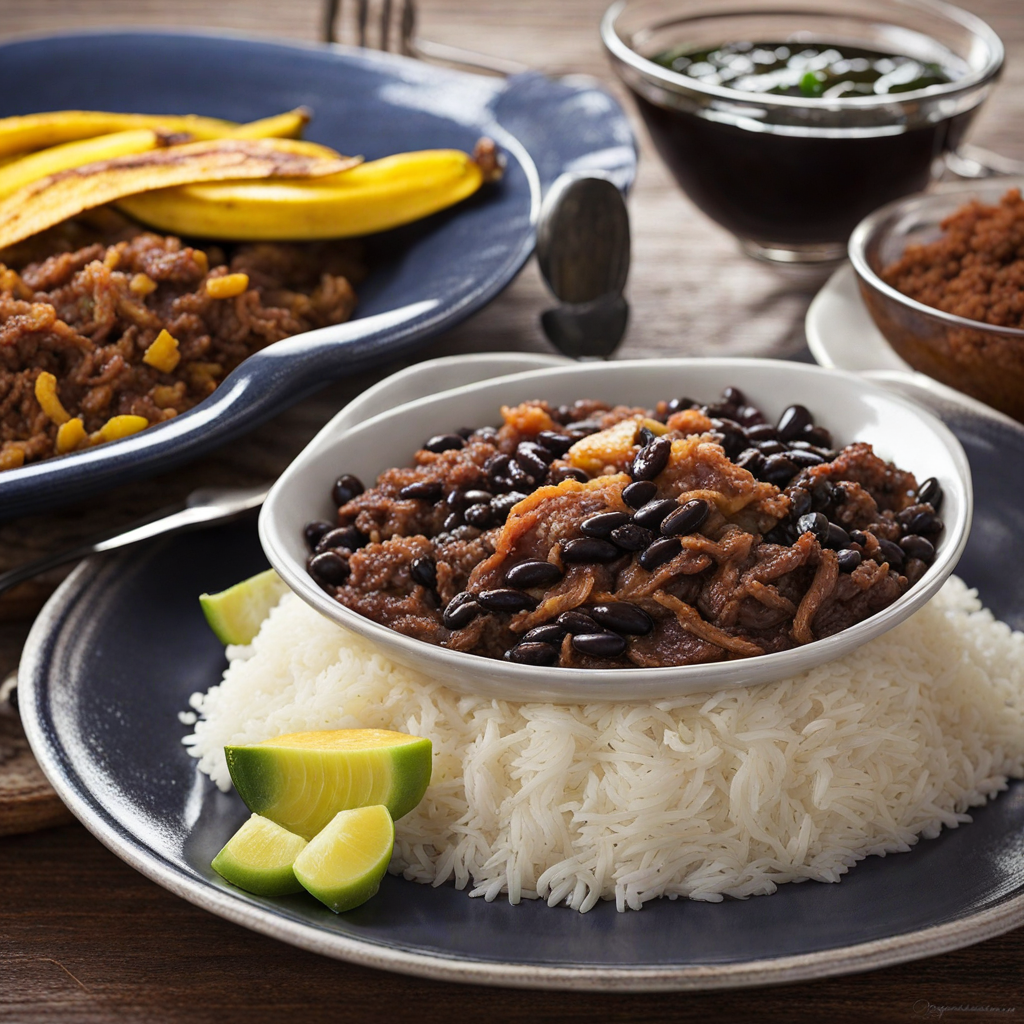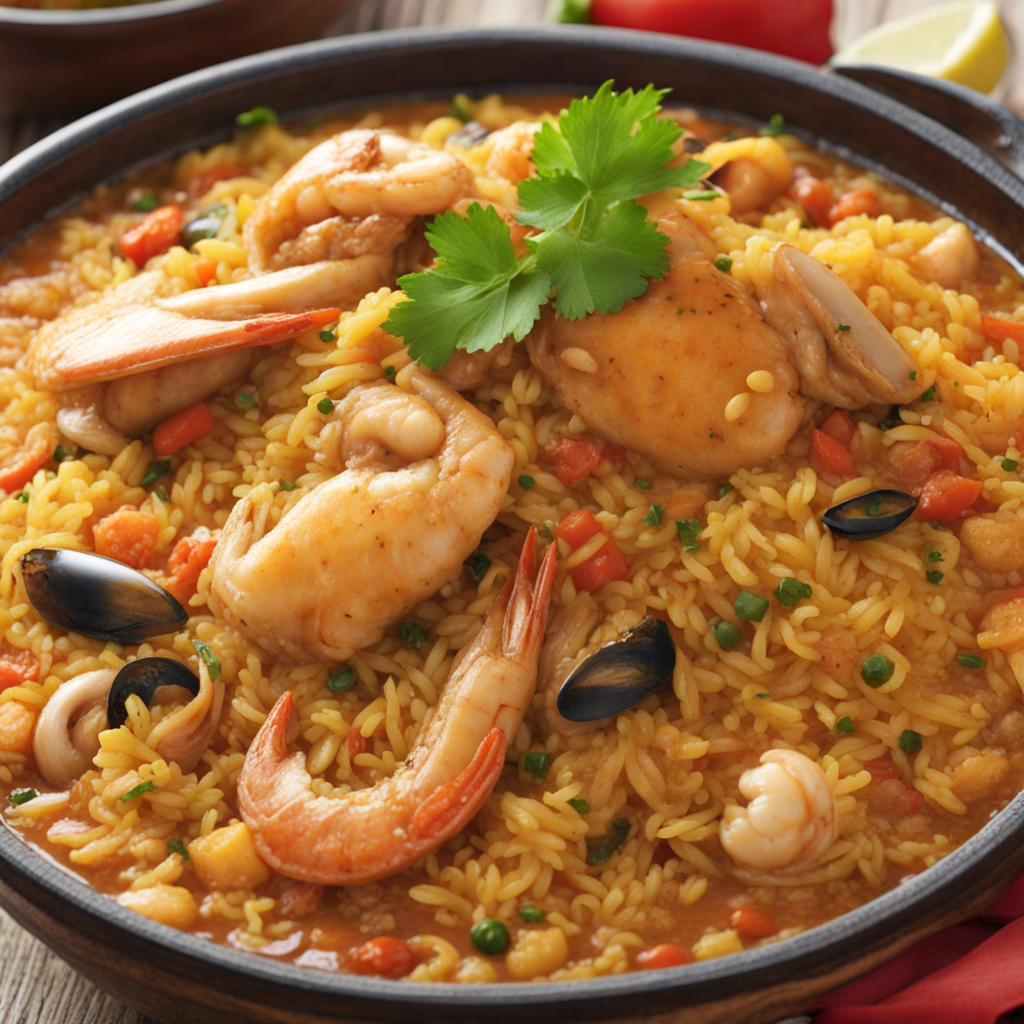Caraotas Negras
Caraotas Negras, or black beans, are a staple in Venezuelan cuisine, celebrated for their rich flavor and versatility. These small, shiny legumes are often cooked to a velvety texture, making them a comforting addition to many dishes. The traditional preparation involves simmering the beans with aromatic ingredients such as garlic, onions, and bell peppers, allowing the natural flavors to meld beautifully. The result is a hearty dish that can be enjoyed on its own or as a side, showcasing the essence of Venezuelan home cooking. In Venezuela, Caraotas Negras are frequently served alongside rice and are a key component of the beloved dish called "Pabellón Criollo." This vibrant plate features shredded beef, fried plantains, and a sprinkle of crumbled cheese, creating a harmonious balance of flavors and textures. The beans are often seasoned with spices like cumin and bay leaves, which enhance their earthy taste, making each bite a celebration of culinary tradition. Their deep color and savory notes not only please the palate but also add visual appeal to the meal. Beyond their deliciousness, Caraotas Negras are also packed with nutrients, making them a healthy choice for those looking to explore plant-based options. Rich in protein and fiber, they provide a satisfying component to any diet, especially when paired with grains or vegetables. Whether enjoyed in a rustic stew, as part of a festive feast, or simply seasoned with olive oil and herbs, Caraotas Negras invite you to experience the warmth and richness of Venezuelan flavors in every bite.
How It Became This Dish
The History of Caraotas Negras: Venezuela’s Beloved Black Beans Origin and Early Use Caraotas Negras, or black beans, are a staple in Venezuelan cuisine, deeply rooted in the agricultural practices and cultural identity of the region. The history of these beans can be traced back to ancient Mesoamerican civilizations, where they were first cultivated around 7000 BC. Archaeological evidence suggests that beans, including various types of black beans, were an essential part of the diet for indigenous peoples across Central and South America. As the pre-Columbian societies evolved, the cultivation of beans, along with maize and squash—collectively known as the "Three Sisters"—became integral to the agricultural practices of the indigenous peoples in Venezuela and beyond. Black beans thrived in the diverse climates of the region, adapting to various altitudes and soil types, which allowed them to spread across neighboring areas, including Colombia and Brazil. Cultural Significance In the context of Venezuelan culture, caraotas negras have transcended their role as mere sustenance to become a symbol of national identity. The beans are celebrated not just for their nutritional value, but also for their connection to family, tradition, and community. In many Venezuelan households, the preparation of caraotas negras is a communal activity that brings families together, often resulting in rich conversations and the sharing of stories. The dish is typically served with rice and is often garnished with ingredients like avocado, fried plantains, or queso blanco, making it a vibrant and colorful meal. The combination of black beans and rice is not only nutritionally balanced—providing essential amino acids—but also reflects the culinary philosophy of balance and harmony prevalent in Venezuelan cooking. Development Over Time The colonial period saw a significant transformation in the culinary landscape of Venezuela, as Spanish colonizers introduced new ingredients and cooking techniques. The incorporation of spices, meats, and various cooking methods led to the evolution of traditional dishes, yet the foundational role of indigenous staples like caraotas negras remained intact. By the 19th century, caraotas negras had become a defining feature of Venezuelan cuisine, particularly in the Andean regions. The dish became popular among all social classes, from the wealthy to the impoverished, showcasing its versatility and adaptability. During this time, caraotas negras were often served alongside arepas, a corn-based flatbread that is equally iconic in Venezuelan gastronomy. In the early 20th century, the rise of urbanization and industrialization in Venezuela brought about significant changes in dietary habits. The introduction of canned foods, including canned black beans, made caraotas negras more accessible to the urban population. While this convenience was welcomed, it also sparked debates among food purists regarding the authenticity of traditional cooking methods. Regardless, the popularity of caraotas negras persisted, solidifying their place in daily Venezuelan life. Modern Times and Global Influence In the late 20th and early 21st centuries, caraotas negras gained international recognition as global interest in Latin American cuisine surged. Venezuelan restaurants began opening in major cities around the world, introducing this beloved dish to a wider audience. The rise of social media and food blogging further propelled the popularity of caraotas negras, as culinary enthusiasts shared traditional recipes and modern interpretations. The dish has also adapted to contemporary dietary trends, with variations catering to vegan and vegetarian diets gaining traction. Chefs began experimenting with caraotas negras, incorporating them into fusion dishes that blend Venezuelan flavors with global culinary influences. For example, caraotas negras have made their way into tacos, burritos, and even gourmet salads, demonstrating their versatility beyond traditional Venezuelan cuisine. Moreover, the ongoing Venezuelan diaspora has played a significant role in promoting caraotas negras internationally. Venezuelans living abroad have brought their culinary traditions with them, sharing recipes and cooking techniques that celebrate their heritage. Community events, potlucks, and cultural festivals often feature caraotas negras, serving as a delicious reminder of home for many expatriates. Conclusion: A Dish of Resilience and Identity Today, caraotas negras stand as a testament to Venezuela's rich culinary heritage and its resilience through centuries of change. The dish embodies the spirit of community, tradition, and adaptability that characterizes Venezuelan culture. Whether enjoyed in a rustic home or a high-end restaurant, caraotas negras continue to invite people to savor their flavors and appreciate their history. As Venezuela faces socio-political challenges, the significance of caraotas negras extends beyond nourishment; it represents a connection to identity and a source of comfort for many. The simple act of cooking and sharing this dish fosters a sense of belonging and continuity, reminding both Venezuelans and the world of the rich tapestry of flavors and stories that define Venezuelan cuisine. In a world increasingly characterized by globalization, caraotas negras remind us of the importance of preserving culinary traditions. They invite us to explore the depth of cultural narratives that food can convey, celebrating not just flavor, but the shared humanity that lies behind every meal. Through the lens of caraotas negras, we appreciate the journey of this humble bean from ancient agricultural practices to its status as a beloved symbol of Venezuelan identity, culture, and resilience.
You may like
Discover local flavors from Venezuela


